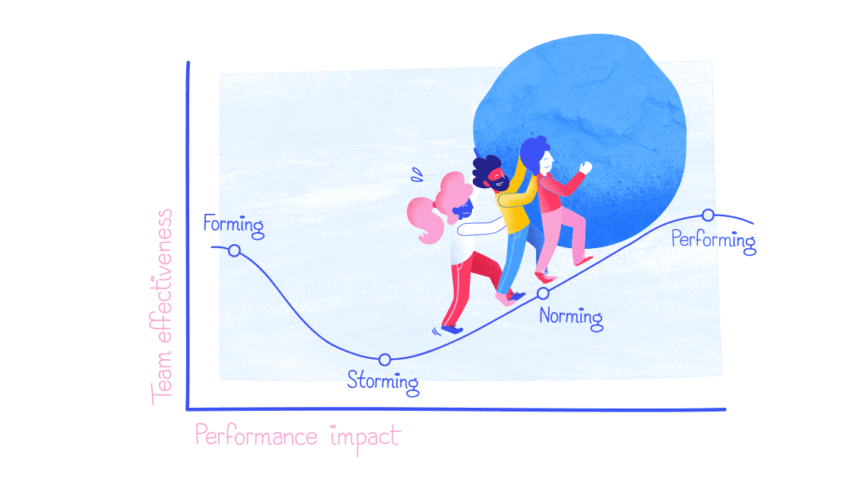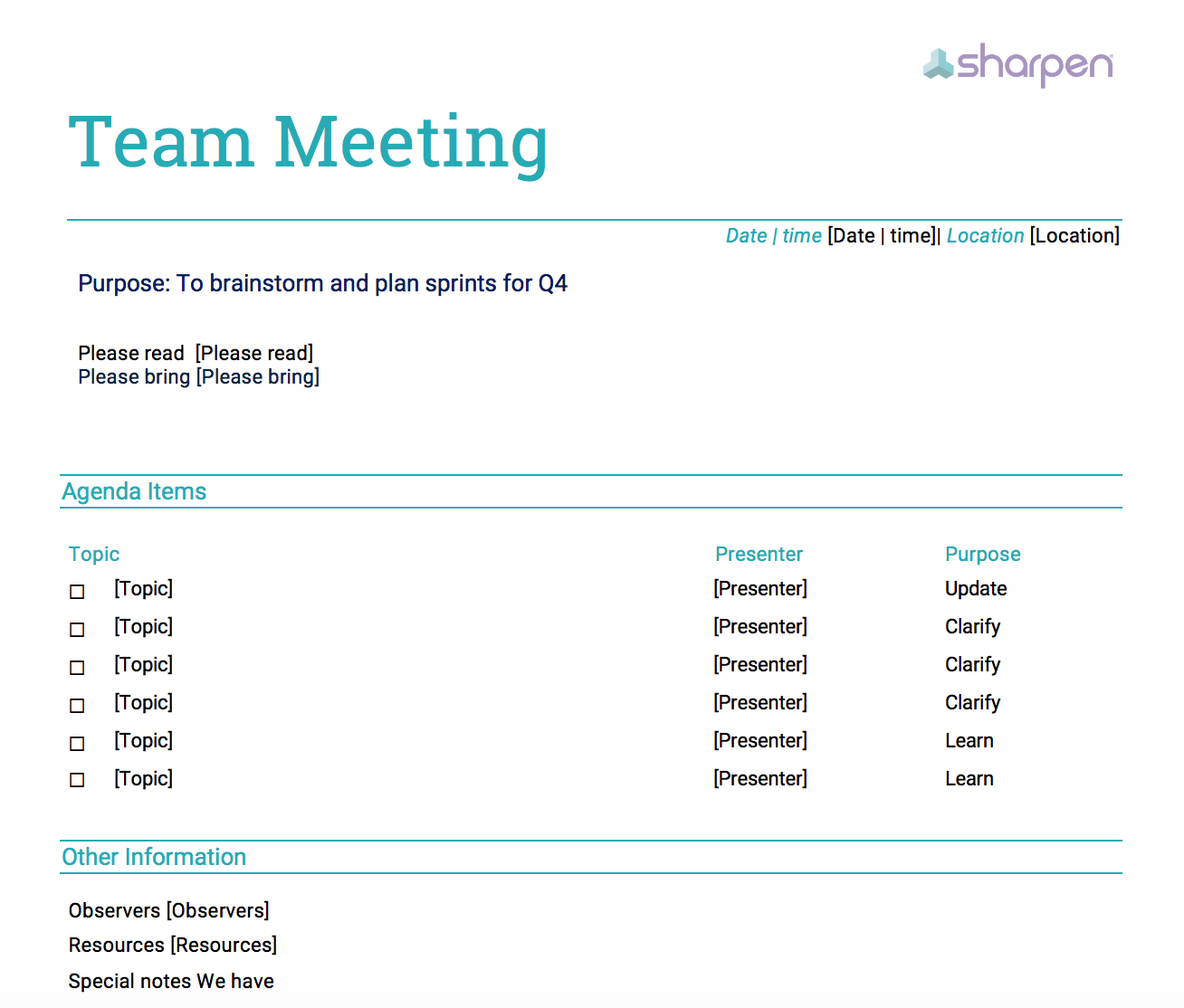
How to Map Out a Team Meeting for a More Effective Contact Center and Better Team Engagement
It’s 3:51 p.m. on a Wednesday, and you’re staring at the clock, waiting for those next nine minutes to slowly tick by. You’re in the middle of an hour-long meeting that your manager could’ve easily summed up in a two-paragraph email. A quick glance around the room proves you’re not the only one feeling seconds last as long as hours – your co-workers’ glossy-eyed gaze tells the story of team engagement that’s tanking.
We’ve all been there.
Ineffective meetings are a drain on your company. And they’re plummeting agent productivity and your team engagement. Don’t worry, you’re not alone. In fact, poorly-run meetings cost companies in the U.S. $283 billion per year.
But meetings don’t have to be a hopeless time suck. With the right approach, meetings help your agents work together to solve customer problems. They foster better relationships in your contact center and craft an environment ripe for better feedback. Plus, better collaboration and more open communication lead to a high-performing team.
One company, OfficeVibe, even credited a team meeting with saving their marketing team from total collapse. OfficeVibe’s account of the meeting showed how meetings give employees a platform to speak about what’s bugging them, then work together to fix it. And, better meetings create the organizational transparency your company needs to reach your goals. The right meeting, led by a manager with great intention, can take your team from “norming” to “performing.”

We’re sharing 7 tactics to help you lead better team meetings that boost team engagement.
1. Create an actionable meeting agenda.
If you plan to take your agents out of their seats and away from customers, explain why. Be transparent about the goals of your meeting up front. Then, design an agenda that lists the topics you’ll cover. Make note of who will lead the discussion and the intent of each topic. Are you talking about a common customer problem to better understand your customer?? Or, are you talking about the problem to work as a team and solve it? Be clear on the why of each topic you discuss, so your agents can take ownership during the meeting to reach desired outcomes. Here’s an example team meeting agenda to get you started.

2. Lead the meeting with encouraging words, first.
As a contact center leader, you set the tone for every conversation you have with your agents. Kick off a productive meeting by sharing positive feedback for your team. Then move into sharing positive opportunities for growth and development. The ideal praise-to-criticism ratio is 5:1. Use this ratio as you lead team meetings to foster better agent relationships and help your team grow.
You may have performance data and constructive topics to surface with your team, but don’t lead with them. While specific, relevant feedback is vital to your team, starting with it disengages your agents from the get-go. Not to mention, too much negativity can undermine your agents’ confidence. Starting with negativity risks mental check-out. Or worse, they’ll retreat into hermit-mode, sliding back into their shells, afraid to contribute to the discussion.
3. Don’t force your agents to speak up.
In a team setting, you want all your agents to contribute to the conversation and share what they’re thinking. You hired some crazy-smart people, and you know what they have to say is valuable. But some people just don’t like to talk in front of groups (hey, introverts! I see you).
Connection and openness come with time, and with trust.
Being put on the spot is embarrassing, and it can erode the trust you’ve worked so hard to build in your agent-manager relationship. That erosion leads to disengagement and a serious disconnect with management. Your team meetings are the perfect setting to talk through your agents’ wins, their blockers, and what they struggle with. It’s natural to ask for feedback and encourage everyone to participate. But, approach this situation with tact.
Address the room and make sure no one has any burning thoughts or questions, but don’t force feedback and sharing in a semi-public space. If you notice a few agents who typically stay silent during team meetings, use your 1:1 conversations with them to seek direct feedback. Those personal conversations serve as an environment where your agents might be more comfortable sharing what’s bugging them, or the success they had during an interaction last week. Build trust individually. Then, as you hold more team meetings, your agents will learn it’s another safe space to freely express themselves.
4. Keep the timing and meeting topics consistent.
Don’t just cancel a meeting because WFM predicts a busy period. Your team meetings are so important to your agents’ engagement, empowerment, connection to their peers, and to your company goals. The idea of keeping agents hooked up to a headset for the entirety of their shift needs to be retired. And industry leaders think so, too. We’ve seen a recent shift from workforce management to workforce engagement management. A Call Centre Helper article explains the difference between the two mindsets. Where workforce management and optimization is all about managing and optimizing your agents’ time and productivity at work, workforce engagement management is about engaging your employees and giving them what they need to be successful. Then, more optimized time and higher productivity follow.
“WEM, this agent-centric view, is the evolutionary by-product of the thought processes around contact centre staffing. While metrics are, and will always be, a key management tool for assessing agents, businesses of all sizes are recognizing that empowered and engaged agents not only perform significantly better, but they can dramatically impact the overall bottom line.”
WEM puts your people back at the center of how you manage your contact center. It’s about listening to your employees, evaluation and improvement, metrics and recognition, and more. Team meetings are vital to engaging your workforce because they’re a forum for larger conversations. Team meetings let you praise your agents, start conversations about your customers, and chat on important KPIs, all at once. Work team meetings into your schedule, and don’t cancel them on a whim. Time off the phones and away from the computer is essential to keep your agents connected to your larger mission and to their teammates.
5. Give updates about how you’re tracking towards your long-term goals.
Keeping employees invested and aligned to your contact center goals (and company goals) is vital to their engagement and success on the job. And, letting them know how the team is progressing towards those goals is important, too.
Talk about goals and KPIs in your team meeting, and build custom dashboards to help your agents visualize your key contact center metrics. Then, your agents get a better grasp on where to focus more attention and where they’re excelling. Diving in on these topics gets your team excited about goals and opportunities to make a company-wide difference. They walk through the door each day knowing they’re insanely valuable employees and that putting on their headset and greeting their first customer inches your company closer to long-term goals.
6. Promote psychological safety.
In a two-year study conducted by Google, researchers found psychological safety to be the number one key dynamic of an effective team. Team psychological safety is the belief your agents know that the team is a safe space to take risks. Your team meetings offer up the ideal environment to create that environment.
Kick-off your meetings and recognize your agents’ efforts and success, then offer up the chance for peer recognition. Recognition builds a sense of community that paves the way for psychological safety. And it makes your employees happier. A report by TINYpulse found that your happiest 58 percent of employees will recognize their peers when you make it easy to do so. Pad your meeting with extra time for this recognition, and organic conversation, so your agents can learn from each other and build better relationships.
And, work time for questions into your team meeting agenda, so your agents feel encouraged to speak up, even about hard topics that feel a little risky. Building in time for these off-the-cuff conversations opens the door for your agents to share customer issues that come up frequently, or ones they’re struggling to solve. Whatever the case, structure these meetings as a safe space for your agents to talk through what’s working and what’s not.
7. Outline accountability for post-meeting work.
Well-run meetings are a collaborative tool to build your business. As you talk through your agenda topics, assign actionable tasks and establish outcome owners for better accountability.
If Mary thinks Joe intended to reach back out to an angry customer, but Joe thinks Stephanie took on the initiative, your outcomes get muddled. And your customer doesn’t get the help they need. Plus, Mary, and Joe, and Stephanie get frustrated. When enough of those frustrations pile as high as your employee PTO requests during the sun-kissed months of summer, your agents disconnect from their roles and disengagement spikes. Then, you, your team, and your contact center feel the negative impacts of brushing employee engagement under the rug.

